Liposuction Recovery: Tips + What To Expect
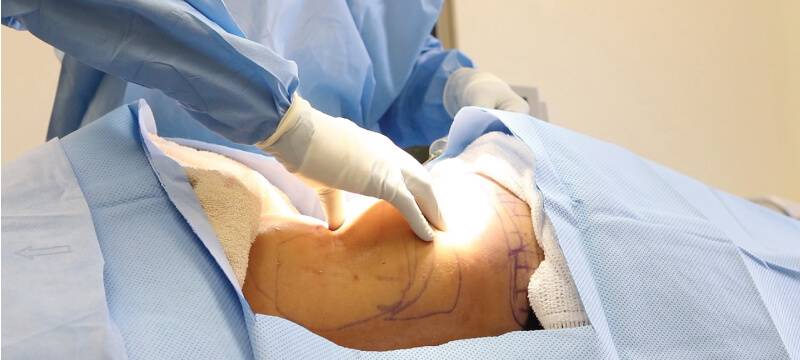
Originally published on June 20, 2017. Updated June 22, 2021 with added content on compression garments.
Are you considering a liposuction procedure? If so, you may have questions regarding how long it takes to recover from liposuction.
It is important to note that your experience may differ greatly from other patients, as each individual varies in terms of their individual pain tolerance and recovery response. Additionally, there are various characteristics of the procedure that can influence recovery including the type of liposuction technique performed, the type of anesthesia used, the number and location of treated areas, and the amount of fat removed.
With those differences in mind, this article will give you an understanding of the average liposuction recovery, along with tips on making your recovery faster and easier.
Liposuction Recovery Time
2-3 Days Following Surgery: During this period patients typically experience moderate pain and discomfort, which can be managed through pain medication. Most patients will need to wear compression garments which will limit their mobility. Patients are encouraged to limit unnecessary physical activity.
1-2 Weeks Following Surgery: Pain and discomfort may continue to persist, but becomes lesser with time. Most patients will be able to return to work as long as they refrain from any form of strenuous activity. Compression garments will continue to be used and incisions and fluid drainage should be regularly monitored.
2-5 Weeks Following Surgery: Pain should be fully subsided and results start to become visible. However treated areas may still exhibit swelling and bruising. All incisions should be fully healed. Most patients can begin light to moderate exercise after week 3, however high impact exercises should continue to be avoided.
6 Weeks Following Surgery: Most post-liposuction swelling and bruising should be resolved, enabling the patient to see the result of their procedure. Compression garments will no longer need to be worn and all forms of physical activities can be resumed.
Video: Real Liposuction Recovery VLOG
Liposuction Recovery Tips
Follow All Post-Procedure Instructions: Following all post-procedure care instructions provided to them by their physician is the most important thing a liposuction patient can do during their recovery. This includes attending any recommended follow-up appointments.
Avoid Blood Thinning Drugs: Refrain from using ibuprofen, aspirin, or any other blood thinning drugs in order to decrease the risks of unnecessary swelling or bleeding. Caffeine, alcohol, and cigarettes should also be avoided.
Rest: Like all surgeries, rest is the most needed ingredient for the body to heal. Clear your schedule for the weeks following your procedure to allow for plenty of rest and relaxation. So don’t feel bad for lounging around and make sure to get plenty of sleep following your procedure.
Stay Hydrated: Drinking plenty of water post-procedure is critical. Proper hydration aids the body during its healing process.
Proper Diet: Healing requires proper nutrition. Following liposuction, patients should eat a well-balanced diet and limit their consumption of salts, sugars, and saturated fats. Foods including salmon, berries, and green tea are full of healthy vitamins and antioxidants which can help boost the body’s recovery.
An Apple a Day: Reduce post-procedure swelling and bruising by eating apples or pineapples during your recovery. Both fruits are naturally high in bromelain and quercetin, which contain anti-inflammatory properties.
Light Exercise: While patients should refrain from intensive exercise during the initial weeks following their procedure, some light exercises such as going on short walks can speed up the body’s healing process. Make sure to follow any physician provided guidance and don’t overdo it!
Lymphatic Massage: Undergoing weekly lymphatic draining massages (a gentle massage technique focused on releasing pent up toxins in the lymph nodes) after liposuction has been shown to decrease recovery time while minimizing pain and discomfort suffered by the patient. Lymphatic massage can also boost a patient’s immunity, which can prevent infection.
Aromatherapy: Some patients may feel the effects of depression during their recovery. Patients should try aromatherapy (especially using grapefruit or peppermint essential oils) to lift their mood.
Compression Garments: While uncomfortable at times, the use of compression garments can be essential to properly recovering from liposuction. Most patients will be advised to wear a compression garment, which can reduce pain and discomfort, aid in the draining of fluids, and protect incision sites.
Avoid Pools: Avoid swimming or taking a bath during the full duration of your recovery as soaking the treated area(s) can increase the risk of infection and slow down the body’s healing processes. Submerging or soaking in water may feel like a luxurious way to recover, but it can easily lead to infection at the incision sites, which increases risk of scarring. Wait until day 3 to shower, and limit soaks until your incisions are fully healed.
Avoid Smoking & Drinking Before and After Liposuction: It’s advised to avoid smoking and drinking 4-6 weeks before and after any major medical procedure. This minimizes your risk of complications and improves your rate of recovery. Smoking increases the risk of infection by decreasing blood flow. Drinking alcohol increases risk of scarring by causing skin dryness. Both create changes to blood chemistry which can increase the risk of complications related to anesthesia.
Avoid Tight-Fitting Clothing: After your surgery, you’ll be fitted with a compression garment that’s designed to apply even pressure to the treatment area. This improves healing and enhances results by smoothing and tightening skin. Tight fitting clothing is not a replacement for compression garments and can cause more harm than good by restricting the movement of fluid. Wait until you are fully healed to show off your new contours!
Practice Proper Wound Care: Infection at the incision site is among the most common, yet most easily preventable, complications after liposuction. Follow your doctor’s post-operative instructions regarding wound care. Change dressings and bandages as recommended and keep incisions dry and clean. Proper wound care also reduces scarring.
Enjoy Mindful Movement: While too much exercise too soon can be detrimental to your results, it’s important to move beginning on day 1. Easy walks promote blood circulation which reduces swelling and hastens the recovery process. With your doctor’s permission, slowly increase the length or pace of your walks, or add in other zero-impact cardio as your body heals.
Are Liposuction Results Instant?
Due to swelling, liposuction results won’t reveal themselves immediately after the procedure. With proper recovery and care, you can look forward to seeing final results within 1-3 months.
Immediately after your liposuction procedure, swelling, bruising, fluid retention and loose skin can make the treatment area feel larger or less contoured than it was before. Wearing compression garments and following post-surgical instructions as directed will ensure your skin tightens as swelling goes down.
Recovery timelines vary depending on the amount of fat that was removed, your age and fitness level prior to surgery, and your adherence to your recovery protocol.
Before and After Liposuction
View Liposuction Photo Gallery
Will Liposuction Leave Scars?
During your liposuction procedure, your doctor will make several small incisions in which to insert the cannula, the device which removes your fat cells. Liposuction incisions are very small and placed in areas where they will be least noticeable.
Scarring can further be prevented by closely following your doctor’s after-care instructions. This includes keeping the incision site clean and dry.
Compression Garments After Liposuction
Unlike Spanx or compression tights for athletes, medical compression garments are specifically engineered to apply even pressure to your treatment area while offering multi-directional stretch. These garments come in several sizes and shapes, and can be worn on nearly every part of the body.
Wearing your compression garments as directed is vital to achieving the best possible liposuction results. Compression garments are typically worn 24/7 for the first few weeks following your procedure. After 3 weeks, your doctor will have you gradually reduce their use as your body further recovers.
Compression garment benefits include the following:
- Reduced swelling
- Reduced bruising
- Minimal scarring
- Edema (fluid retention) prevention
- Reduced discomfort
- Enhanced results
Garments should be snug, but never painful. See your doctor if you are unsure about their fit.
What Are the Risks of Liposuction?
Complications are possible with any surgical procedure. However, liposuction is relatively safe. There are over 400,000 liposuction surgeries in the United States each year and reports of serious complications are minimal.
The following symptoms are cause for concern and a reason to contact your doctor immediately,
- Unexpected bruising
- Redness or discoloration of the skin
- Irregular skin texture, including ripples or uneven contours
- Lumps or bumps under the skin
- Sharp nerve pain, or sharp pain in the treatment area
- Skin necrosis (skin cell death)
- Unexpected scarring
- Adverse reactions to anesthesia or other medications
Selecting an experienced, board-certified plastic surgeon for your procedure and following your doctor’s post-operative advice will significantly minimize the risk of these complications.
Maintaining Liposuction Results
Liposuction permanently removes fat cells from a specific area of the body. This does not mean that remaining fat cells cannot grow, nor does it mean you can’t gain weight in other areas.
To maintain your liposuction results, it’s important you maintain your post-surgery body weight. The best way to do this is with a lifestyle that embraces healthy eating and daily movement.
Additional Resources Regarding Liposuction Recovery
- American Society of Plastic Surgeons
- RealSelf.com liposuction recovery forum
- MedicineNet
- American Board of Cosmetic Surgery
- RealSelf Q&A Thread
- Great blog post on lipo recovery by Cleverly Catheryn
Disclaimer: The contents of the Westlake Dermatology website, including text, graphics, and images, are for informational purposes only and are not intended to substitute for direct medical advice from your physician or other qualified professional.
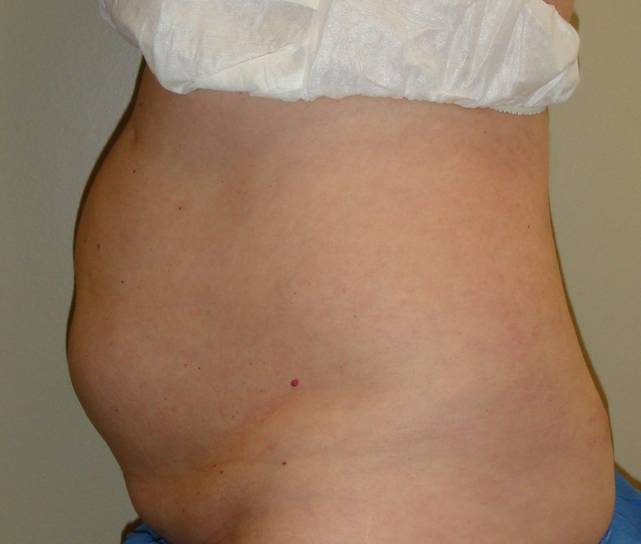 Before
Before 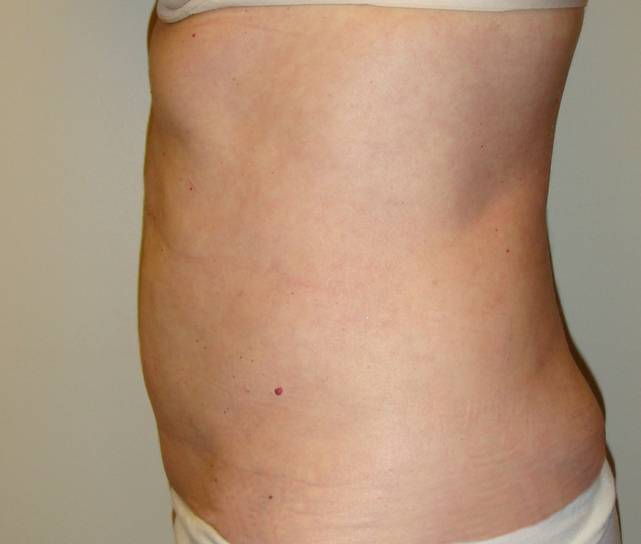 After
After 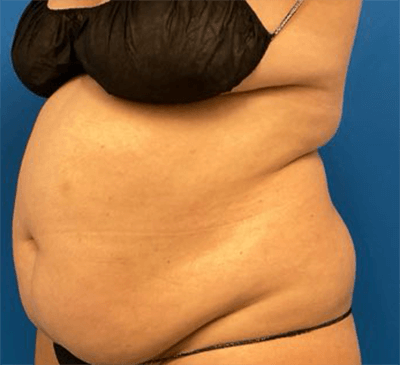 Before
Before 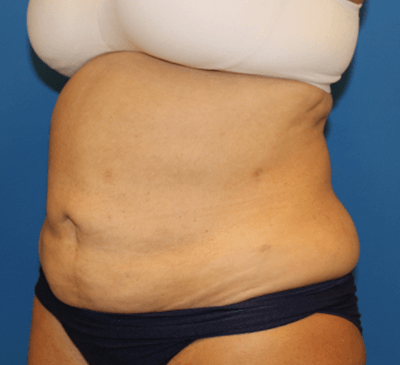 After
After 
My sister is preparing to have liposuction done sometime soon. I am really glad to hear that the recovery goes really smoothly. She has been really excited for this procedure and I can’t wait to see the results.
Thank you so much for showing me what it takes to recover from a liposuction surgery. Recently, my friend has lost a ton of weight from cutting back on his food intake and exercising every single day. Because of that, he has a lot of excess skin and fat that needs to be removed. I think that this information would be really beneficial to him because the recovery could take up to 6 weeks, just like you mentioned; however, he can start to do most things around the home pretty quickly. Thanks again for all the information, and I will make sure that he knows more about this!
My wife is wanting to lose weight very quickly and we’d heard about liposuction and how nice it can be. I liked that you had mentioned that it can be important to stay hydrated and get a lot of rest to make the healing process go by quickly. We’ll have to start looking around for a professional that can handle liposuction, and I’ll be making sure she gets plenty of rest and is hydrated along the way.
It was nice to know that it is only after six weeks after the surgery that the results of the liposuction treatment will be seen and normal activities can be resumed. My surgery is next week (in Atlanta) and I was getting really nervous but this made me feel better
I like how you mentioned that you should be close to your weight goal before getting liposuction. I totally did not know that! I was wondering what other resources you have for lipo? Can you send me more info to review
Hi Bethany, thanks for reading our post and submitting your question! We have a lot of great posts on liposuction (and SmartLipo) here: https://www.westlakedermatology.com/category/liposuction/. Also you can visit our service page for more info: https://www.westlakedermatology.com/cosmetic-procedures/plastic-surgery/liposuction-austin-tx/
Finally, if you’re in the Austin area you can always call us to setup a free consultation!
Thanks again,
WD Staff
It’s good to know that it can take 6 weeks to completely recovery from liposuction. I’m sure the first couple of weeks will be the hardest though, like you said. You should definitely make sure you take it easy during that time.
A friend of mine is going in for her first liposuction treatment next week. We don’t know anyone who’s done this before, so we aren’t sure what to expect at all. I appreciate the information in this article, it’s good to know to avoid blood-thinning drugs and caffeine after the procedure.
I’ve been trying to lose weight, but I haven’t lost much mass. Because of this, I’ve been thinking about getting liposuction. It’s interesting that liposuction can take 1-2 weeks to stop aching. Where can I learn more about liposuction and it’s pros and cons?
Hi Taylor, Thanks for reading our post and submitting your great question! You can find more info on liposuction at this page (https://www.westlakedermatology.com/cosmetic-procedures/plastic-surgery/liposuction-austin-tx/) as well as on our blog (https://www.westlakedermatology.com/category/liposuction/).
Hope that helps!
WD Staff
Hey I was also not aware of this as I thought the procedure was to be done if you were carrying extra weight so I’m confused why it suggests you to be at an ideal weight for procedure
Thankyou
Hi Orla,
Thanks for reading out post and submitting your question! Just to clarify, we always recommend perspective liposuction patients to have an in-person consultation to determine candidacy. I just want to make sure readers are not dissuaded from the procedure from reading this post. An in-person consultation with a board certified plastic surgeon or dermatologist is the only way to know if Lipo truly is for you!
Basically, liposuction is not a weight loss treatment. It’s a body contouring procedure that is dedicated to addressing isolated pockets of fat and shaping (contouring) the silhouette. Depending on specific needs and characteristics of the patient, doctors may recommend a weight loss program prior to a lipo procedure. That recommendation can differ from patient to patient (which is why the in-person consultation is very necessary).
We hope that helps!
Thanks,
WD Staff
I will say my recovery took awhile, it was more than 6 weeks before I was comfortable doing moderate physical activity. But overall I am happy with results and would do it again in a heartbeat 🙂
Thank you for sharing it was 6 wks for you. I’m going into week 4. I had an extended tummy tuck, breast reduction and lip all around. I had a mom make over. My incision pain seems ok now but the real pain I still have is I guess from the Plycation. My stomach muscles seem hard and swollen and bulge if I stand too long, it seems. Also the pain from lipo, I guess where I feel burning sensation and sometimes sharp pain around my flanks and back side.
Every thing looks great tho I’m swollen which is normal. I had no complications. I hope this week the lipo pain starts to calm down. Because of the plycation for diastasis repair and lipo, I can’t walk too long or stand too long, still.
Thanks for sharing the useful tips. Great resource for people to learn ore about the post-surgical routine.